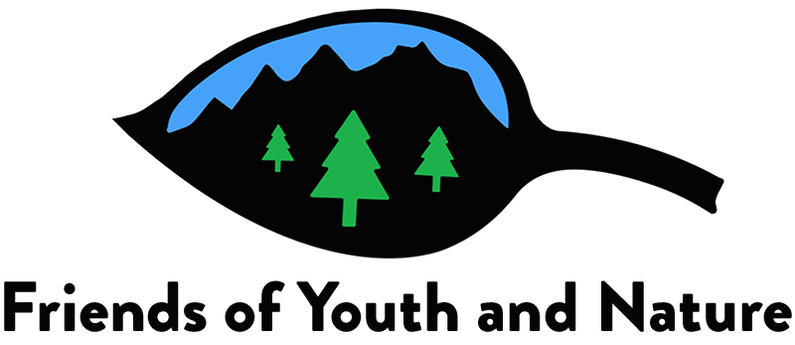|
Tips to help you connect your family to nature!
|
2 Comments
Birds of a feather flock together, as they say, and what better outdoor activity is there than bird watching in your backyard, or on your nearby public lands? Birds are everywhere, but we often don’t take the time to learn about them. Friends of Youth and Nature wants to encourage you to learn more about local bird species and start your bird list by offering a chance to win one of three pairs of Celestron or Vortex binoculars as motivation. The age categories for winners are: 5-9, 10-14, and 15-19 years old.
How do you enter? Visit our website at www.friendsofyouthandnature.org and download the bird identification worksheet, or contact us (friendsofyouthandnature@gmail.com, 970-901-1459) with your mailing address for a hard copy. Go outside with your family – anywhere local will do: your backyard, a local park, or nearby public lands. Take your identification worksheet - it lists nine of the most common birds seen in Western Colorado. And don’t forget your phone! There are several apps that can help you identify birds. Some helpful apps that have both pictures and songs are: The Audubon Bird Guide of North America (found at audubon.org); the Merlin Bird ID from Cornell Labs (merlin.allaboutbirds.org); and eBird, which also has a cool song sleuth app that will listen to the bird song or call you hear and identify possible matches. When you complete your bird identification worksheet (link below), take a picture of it and email it by July 31, 2020 to: friendsofyouthandnature@gmail.com.. Be sure to include your name, age, and the details you have recorded about your birding experience. You can also mail it to FOYAN at P.O. Box 634, Hotchkiss, CO 81419 by that date. We will draw one name for each age category on August first and arrange for you to pick up your new binoculars! So, how do you start? If you want to attract birds to your backyard, the best way is to provide a bird bath. Bird baths are better than bird feeders, because bird seed is known to attract rodents and even bears! Just sitting quietly under a tree in your backyard offers easy access to many common birds such as Robins, House Finches, and even Hummingbirds. You will be surprised at how many birds there are so close to home. Where do you find birds? Everywhere! How do you find them? Some advice from the Audubon society helps make it easier. There are four basic bird finding steps: Stop, Look, Listen, and Repeat. First, STOP: take a minute to stand still and take in your surroundings and think like a bird! Second, LOOK for possible perches like powerlines, fence posts, and tree tops. Look for movement. Third, LISTEN. Your ears can detect vocalizations, tapping, or rustling of birds as they communicate with each other. Finally, repeat. You will become more and more aware of birds around you as you meander slowly though their world. If you choose to go to a local park or forest, make sure you gear up! Parents, take your children under your wing, wear comfortable clothing and sturdy shoes, take a pack with snacks and a water bottle, and use your eagle eyes to see the birds around you. If you don’t have a pair of binoculars, your local library has a Colorado Parks and Wildlife outdoor backpack for check out – complete with binoculars, and a state park pass. Before you know it, you will become so absorbed in the bird search that all the world’s problems and your anxieties will melt away. Searching and identifying birds and observing their behaviors is a perfect way to focus on something positive together as a family. Give it some time and patience; you will take to it like a duck to water, and feel your stress roll off your shoulders like water off a duck’s back! Enter our birding contest by August 8th for a chance to win a new pair of binoculars! Contest Rules Bird Identification Worksheet There’s a lot of uncertainty in the world right now. Your whole family may be feeling the stress caused by changes in your normal routine, not being able to see the people you care about, and the stress and uncertainty that comes with economic instability and social change.
Now, more than ever, it’s important to stay connected with the calming influence of the natural world. But in these times of physical distancing, how can you and your family get out in nature while staying safe? Here are a few ideas for maintaining your mental and physical health in the outdoors turning adversity into opportunity during these strange times. Explore Somewhere New A lot of people are home from work right now and the usual standby trails and natural areas are often more crowded, even on usually-quiet weekdays and off-times. This is a great opportunity to find a new, out-of-the-way place to explore the great outdoors. Is there some tucked away trail or park (near home) that you’ve been meaning to explore, but just never made the trip? Make that your destination for the day! Remember, we shouldn’t be traveling outside of our home areas at this time to avoid spreading COVID-19 to other places, but if there’s a trail within an hour or so of your home base, that’s a reasonable effort to make in order to get away from the crowds and find somewhere new to explore. You can find some of these trailheads on Friends of Youth and Nature’s website under map resources: https://www.friendsofyouthandnature.org/maps.html Find the Hidden Gems Nature is everywhere, and even that overgrown open space near your home can hold a lot of interest and educational opportunity. Take the kids out for a grasshopper survey - how many different kinds can you find? What’s the biggest one, or the smallest one, and why might they be different sizes? Which one is the most common? Why do you think that might be? Take a small shovel and dig into the dirt to see what you find. Are there worms, or pill bugs? Are you finding more in one place than you find somewhere else? Why do you think that is? How many different kinds of grass or plants in general can you find in the field? Do some have interesting smells? Are there certain plants that seem to have a certain kind of insect, and why do you think the insects like that plant? Whatever you come up with, you’ll be surprised at your childrens’ imagination, and how much interest and entertainment can be found in a seemingly overgrown, “boring” plot of grass and shrubs. Get Out in the Sunshine It’s no secret that a little sunshine can really turn around your mood. With a lot of stress in the world right now, make sure you take time to just simply get outside (and get away from the news headlines and computer!). Put on some sunscreen, and go out with the family into your backyard, even if it’s just for thirty minutes or an hour. Reading in the sunshine is one of life’s little pleasures. Are you home-schooling right now? Take your lessons outside for some fresh air. Plant a garden and discover more about plant life cycles. Throw a ball and see who can create the highest arc. Play fetch with the dog. Which item does “Fido” like to fetch the best? Wrestle in the grass; is it warmer or cooler at ground level? Be a big kid, have fun while you learn, and enjoy the free time you might have right now! Now’s a time to make memories with your family, and help create some positive experiences that will last a lifetime. It’s too easy right now to stay glued to the news, watching and dissecting every little development. Pile that on top of being cooped up inside, and away from the friends and family you normally see, and you have a recipe for stress, strife, and negativity. Get outside! Have fun! Make the effort to maintain your connection with the natural world throughout this time, and your whole family will be happier as a result. It’s up to you. Like the pages of a book telling a story, the tracks, trails and impressions in the snow reveal the activities of animals in your neighborhood. Each type of animal has unique tracks which reveal a lot about their lifestyles and habits.
By discovering tracks, scat, and other signs of wildlife in snow, you can turn a winter hike into a treasure hunt for your child. Select a snowy area where you are likely to find an assortment of animal tracks, and keep the hikes short and leisurely. Fresh snow early in the morning is best, before tracks melt away. Imagination is key! Animal tracking combines science, creativity, and storytelling. You won’t see the animal itself but the tracks they leave behind are pieces of the puzzle for you to solve. What kind of animal made the track, and what was it doing? Where did they come from, and where were they going? Prompt your child’s curiosity and help sharpen their observation skills. To identify a track start by counting the toes. If it has two toes, it’s probably a deer, elk or moose. If it has four toes and a heel pad, it could be a bobcat, lynx, or mountain lion; it could also be a canine like a fox, coyote, or dog. The easiest way to tell a cat from a dog track is the presence of nails. Cat’s toenails are critical for catching prey so they keep them retracted for protection when not in use. Most canine tracks, on the other hand, have visible nail marks above their pads. Five toes? It could be a raccoon, or another animal that uses its paws like hands. Next, take a good look at the size and how deep the tracks are in the snow. A mouse is smaller than a squirrel. A smaller and lighter animal will leave a shallower impression. Show your child how much deeper your tracks are compared to theirs. Among the big cats, a bobcat track is smaller (and likely more shallow) than that of a lynx or a mountain lion, with the mountain lions’ being the biggest print − almost the size of an adult fist. Lynx tracks can be distinctive because their tracks have hair impressions around the pads. Dog and coyote tracks look similar, but coyote tracks are narrow and diamond shaped while dog tracks are rounder with more space between the pads. Fox tracks are shaped like a coyote but much smaller. Another clue is the animals stride or the repeating pattern of their prints in the snow. Animals walk in four basic patterns: walking, galloping, bounding and pacing or waddling. Those patterns are influenced by the length of an animals legs and their overall body shape. A walking pattern is characteristic of animals with long legs like a cat, dog, coyote, deer or elk. These animals are very efficient and will often place their back foot on top of where their front foot was. Their stride pattern is a series of single prints generally in a straight line. Squirrels, chipmunks, mice, rabbits and snowshoe hare are gallopers because they leap from one location to another. Rabbits and squirrels are similar in that their larger hind paws land in front of the smaller front paws, making four distinct prints per track− two parallel long prints in front of two small round prints. Tracks of snowshoe hare are similar to rabbits but much larger. Look for the round toe impressions of rabbits compared with the long finger marks of squirrels. Bounders are animals that have a bounding stride like weasels, mink and otters. Their front paws hit first and then their back paws land where their front paws were. Their tracks appear as two paws that fall side-by-side. Weasels often drag their tails, leaving a central furrow. Pacers or waddlers are short–legged, heavy-set mammals (beavers, porcupines, raccoons, skunk, and bears) that have a distinctive track with four paw prints. They waddle, shifting their weight to the right so their left front/back paws can move forward, then shift their weight to the left so their right front/rear paws can move forward. You can’t miss a bear track – its paws are huge with five rounded toes and a wide heel pad. Don’t forget bird tracks. You can usually only see their footprints, but sometimes you can see the wing marks where one landed. Take a look at the bigger picture surrounding a set of tracks. Look at the direction of the tracks, and where they end up. A good tracker will be on the lookout for other clues such as blood and/or wing marks indicating maybe a hawk caught something, a spot where an animal burrowed, seeds of a pine cone scattered about (squirrel lunch), or yellow snow− animals pee too! If you want to expand your identification skills, there are apps to help you such as iTrack Wildlife Apps by Nature Tracking. All are easy to use, contain high resolution photos with detailed information and work offline. Remember to be safe. If you spot the actual animal, give it space and an escape route. Always observe from a distance. If you are causing a change in their behavior, you are too close! Whatever tracks you and your child find are clues to an awesome winter treasure hunt, and will spark wonder and discoveries about the animals in your neck of the woods! Cookies, Girl Scouts, and trout may seem like an unusual combination, but, last month, 18 Girl Scouts from Western Slope chapters became STREAM Girls. This Colorado Trout Unlimited workshop is designed to introduce youth to their local watershed through river conservation and recreation. STREAM stands for STEM, recreation and art. Ross Reels, Able Women, and the local Trout Unlimited (TU) chapter ̶ the Gunnison Gorge Anglers hosted the workshop.
The day started with an icebreaker where the girls were grouped by their favorite Girl Scout cookie. Barbara Luneau, TU youth programming volunteer, engaged the girls in a watershed discussion. She explained the path of our rivers from their headwaters to their terminus. The Uncompahgre and Gunnison Rivers are tributaries to the Colorado River, which comprises the third largest watershed in the country. The Columbia River Watershed is second, and the largest watershed in the U.S. is the Mississippi River. “Our rivers here are very hard working with many demands for drinking water, irrigation, livestock and recreation. These rivers are closely managed to meet everyone’s needs,” Luneau explained. “How much water do you think makes it to the Gulf of Mexico? Very little!” The new Colorado Outdoor facility in Montrose provided easy access to the Uncompahgre River, where the girls explored the river corridor. Volunteers guided the girls with probing questions to help them use all their senses to observe the nuances of the river and adjacent riparian habitats as if through the eyes of a scientist, angler, and artist. The girls described the river sounds and smells, and sketched their observations in their STREAM Girls field notebook. Ready to learn how to measure stream flows, the girls stepped into a small channel of the main river wearing hip waders. The scouts timed the travel of a ping-pong ball from a release point upstream to its catch by a scout 30 feet downstream, repeating this three times for an average. The girls rocked at the math, calculating channel area (average width and depth), velocity (distance and time), and finally flow in cubic feet per second. “This is math under pressure ̶ adding, dividing, and multiplying without a calculator!” said Luneau. Kick nets were next on the agenda. The girls stirred up the stream bottom with their feet so aquatic insects drifted into the nets. With giggles and laughter, the girls enthusiastically scuffled about while trying to keep their balance! They rinsed the nets into buckets, and transferred samples into trays for critter identification. Referencing an insect guide, the girls identified species by using characteristics like shape, tails, location of gills, and cases. Of course, this activity also required math skills to determine overall stream health using the diversity of specific bugs (Caddis flies, Mayflies and Stoneflies) and their abundance. Luneau explained that high numbers of these bugs, which are highly sensitive to pollution usually, indicate a healthy stream. Guess what? This section of the Uncompahgre River scored well! With a grasp of stream flows and aquatic insects, the girls had a better idea of where trout hang out and what they like to eat ̶ basics for a successful angler. This is where the Gunnison Gorge Anglers stepped in to help each girl set up her fly rod and learn to cast. The girls and instructors began casting around the pond. Each Scout looked like they were determinedly practicing the summoning charm from Harry Potter, “Accio -trout” that will magically bring whatever item is summoned. Fly fishing is all about tricking the fish into biting your artificial fly thinking it is the real thing, and the art of fly tying is to imitate the look of those tasty morsels. After identifying the common aquatic insects, the Scouts had a better idea of what those morsels look like. Now, sitting at a fly tying station, each scout was patiently guided by a CTU volunteer on how to tie a midge or a winged emerger. With quiet concentration, the girls carefully created art for fishing. To recap the day, the Scouts returned to the river to complete a scavenger hunt for the key ingredients of a stream, and began working on a necklace. Colored beads represented those key ingredients: water, wood, rocks, and plants with the added charms of mayflies, feathers, and bugs. Kate Senn from Ross Reels, a Girl Scout alumna, awarded the Scouts their new patch, and congratulated each with their special Scout handshake. What was their favorite part of the day? “Going into the water with the waders; … finding all the bugs; …being able to see what’s in the water,” were a few of their responses. The day undoubtedly inspired new, young anglers, but their experience of standing in the river and understanding the river dynamics will be remembered long and vividly. Kudos to all Colorado Stream Girls ̶ our rivers need more stewards. ___________________________________________________________________ Colorado Trout Unlimited provides a voice for our rivers. CTU works to conserve, protect, and restore Colorado’s coldwater fisheries and their watersheds. CTU offers a week long River Conservation and Fly Fishing Camp designed to educate 14 to 18 year old students. For more information visit: https://coloradotu.org/youthcamp. Gunnison Gorge Anglers, a chapter of CTU, hosts multiple activities including youth education, fly casting and fly tying lessons, and stream improvement projects. For more information visit: gunnisongorgeanglers.tu.org Able Women is a non-profit public outreach initiative designed to spread the word about fly fishing and the many emotional, physical, and spiritual benefits it brings to women. Find out more at: ablewomenflyfish.com |
ethnobotany-with-kids-by-anita-evans.html
Blogs for Spring! 5 Spring Hikes Birds of a Feather More than Cookies Working for the Great Outdoors Astronomy for Kids Ethnobotany with kids Categories
All
Archive
Archives
March 2024
|

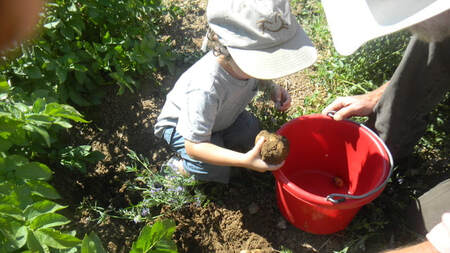
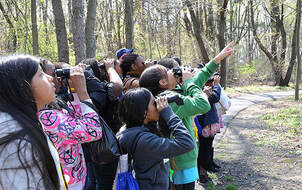
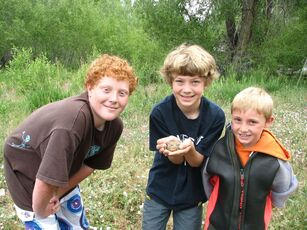
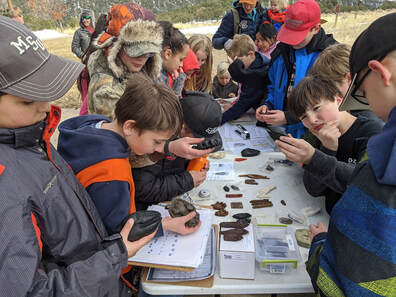
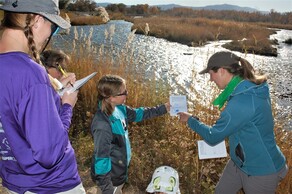

 RSS Feed
RSS Feed


